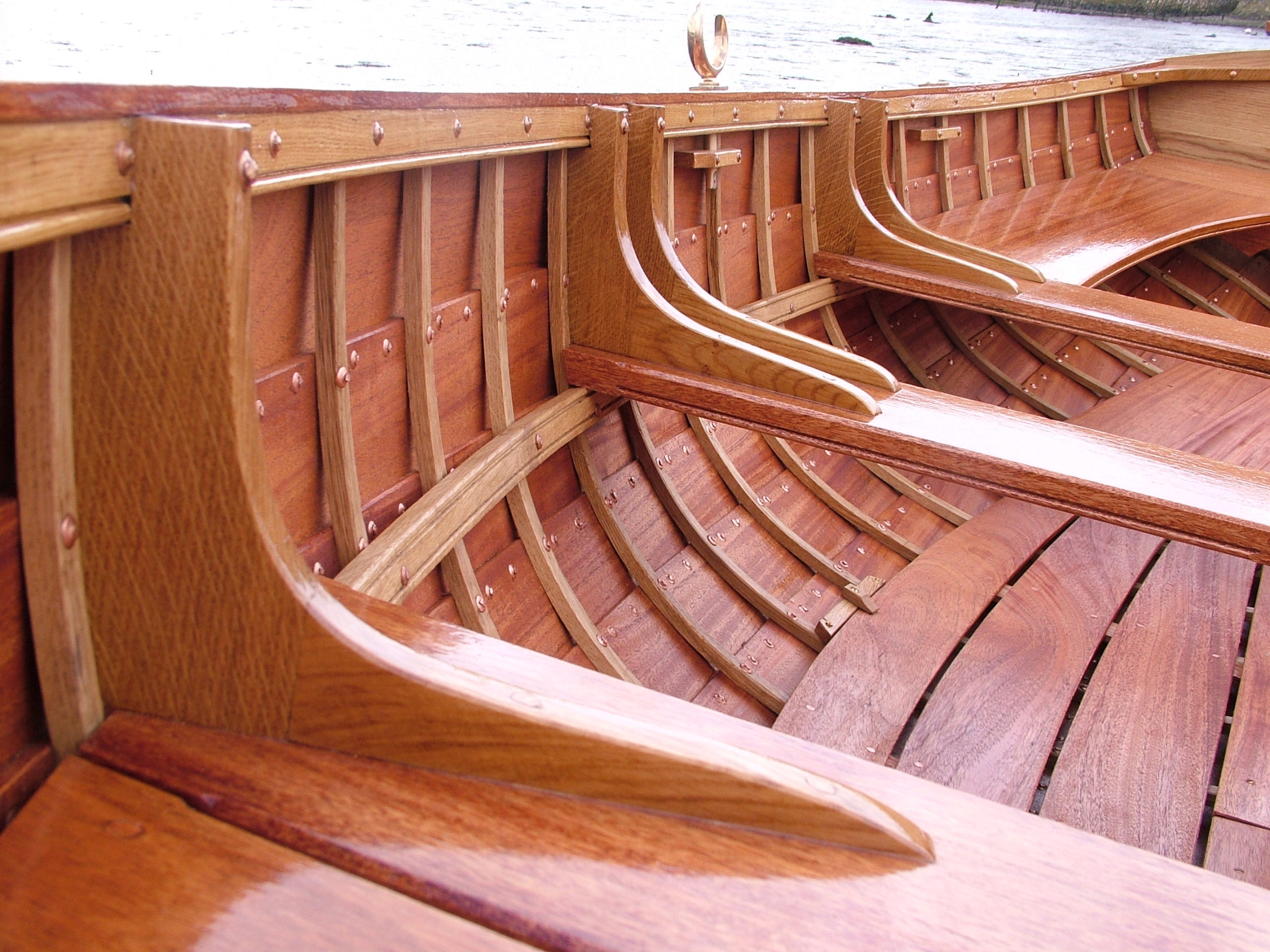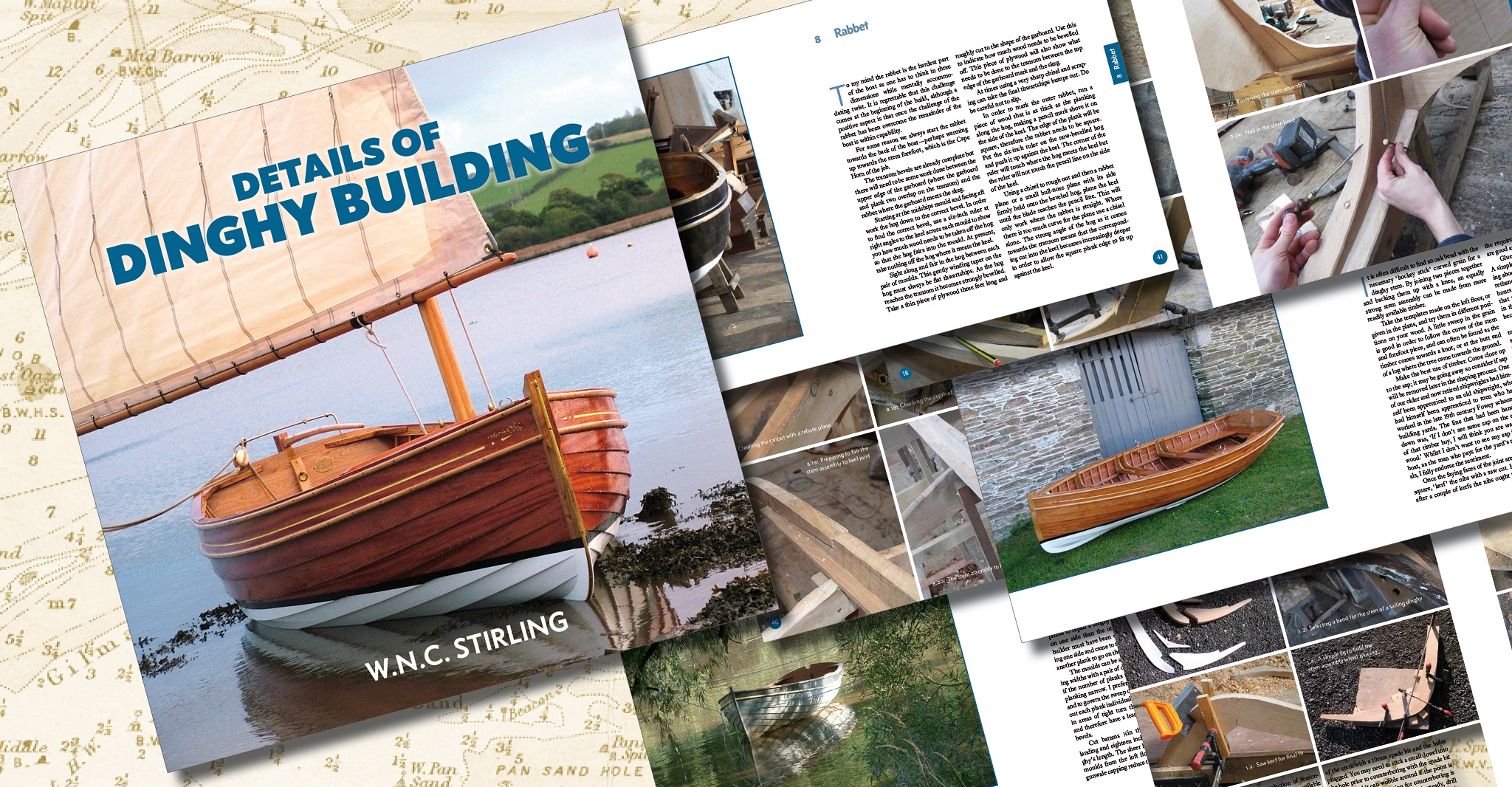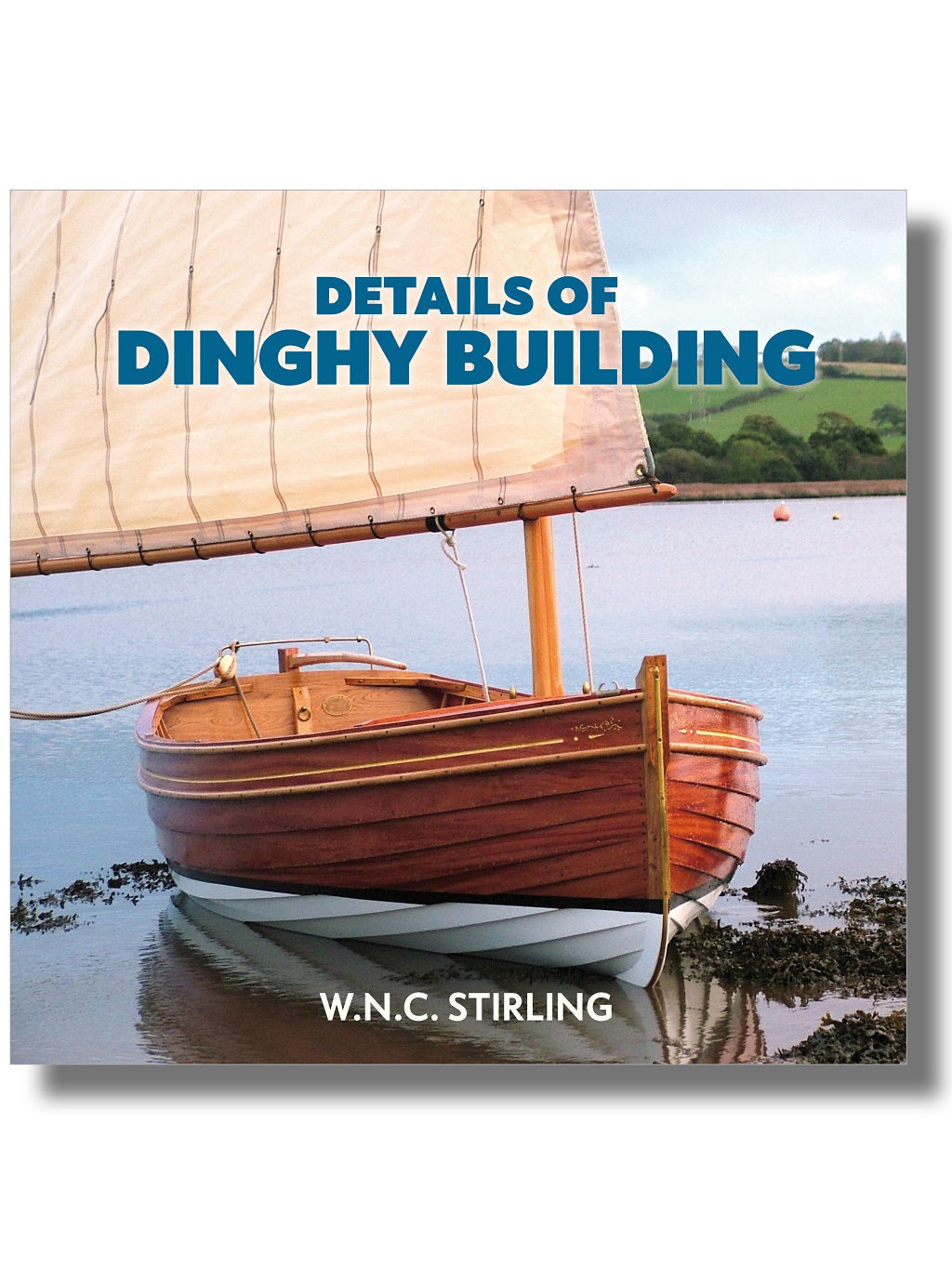
Knees are an immediate indication of the boatbuilder’s ability to make good looking shapes.
Ideally one would like to use an oak crook. However, in these honest times, crooks are pretty hard to come by and also must be well seasoned before use, particularly if there is to be some confidence that they will not be caught. Half-lapping is a reasonable alternative and has the added benefit of being economical in timber use. Thwart knees should be one inch thick. Machine timber appropriately, half-lap and glue together.
Consider the orientation of the knees so that the joints will all appear uniform port and starboard. For example you may want to see the horizontal joint of the half-lap when looking at the dinghy from forward and the vertical joint when looking from aft. In order for this to come about the port side half-laps will have to be cut in the opposite orientation to the starboard side.
Each central thwart has two knees per side, the forward thwart one knee and the after thwart no knees.
At each bay between the ribs where a knee will be located, fit packer up between the gunwale and planking. If this is forgotten, when the rivet is tightened in the knee head it may crack the plank, as the plank can be pulled into the fresh air between the plank and gunwale.
Plane the underside of the knee foot flat. It may also have to have a slight bevel. Push it outboard until it touches the gunwale and clamp it in position.
Make a chock of wood the size of the gap between the inboard face of the gunwale and the inboard face of the planking. Use this chock to trace the shape of the boat onto the knee. This can also be done with a pair of dividers.
Cut out to the line. The knee on the forward thwart will be square to the hull and is easy to cut on the bandsaw. The knees on the central thwarts will have a bevel where they touch the hull because they line up with the thwart which is square to the centreline yet the outline of the boat is a curve.
Either use hand tools, a jig saw with a bevelling foot, or bevel the bandsaw bed. Inevitably, getting the knee bevels to fit is time consuming.
Fit all of the thwart knees before shaping the curved face. Shape one knee and use it as a template for the others.
The head of the knee is square; it stands proud inboard of the gunwale ⅞in. The body of the knee must not be parallel with the planking otherwise it will seem too upright. It must gradually increase in width until it curves into the foot which is gradually tapering, narrow and long; in essence it must be elegant.
A sanding drum in a drill is useful to smooth the curve of the knee; knobbly knees are never attractive. Put a light chamfer on the edges of the knee.
Once the knees are shaped a pair of 13G rivets may be put through the half-lap so that should the glue fail in several decades time, the knees will hold together and do their job. Consider the orientation of the rivets so that they are all facing the same way.
Glue the knees into the boat. This will serve two purposes: firstly it will prevent water wicking under the knee and sitting atop the thwart which will eventually lead to decay, and secondly it will make it much easier to fasten the knee in the exact position that you want it to sit.
Check the double knees from the opposite side of the boat to ensure that they are parallel and also to ensure that the gap between the knee and the edge of the thwart is parallel.
To fasten the foot of the knee, drill down through knee and thwart. Make sure that the fastenings in the knees are all drilled the same distance from the knee’s toe.
Lightly countersink and drive a 10G 2½in or 3in nail down through knee and thwart. Leaning on the nail head, clench or bend the nail over into the grain underneath the thwart. This is a neater method than riveting; nobody likes to see a pair of limpets on a thwart foot.
To fasten the head, drill outward angling the drill down slightly so that the nail head is below the upper rubbing strake. If the knee is one of a pair drill its neighbour at the same time, making sure that the angle of the drill is the same so that the nail heads are in line on the outside. Rivet the knee head with a 10G nail and 7/16in rove.
In the plank below the sheer plank, drill through from the outside of the boat into the back of the knee. Countersink the hole and drive in an 8G by 2in bronze gripfast nail. If the dinghy is a larger sailing dinghy she may also need a second gripfast nail through the sheer just above the cove line.
As with the thwart knees, the gunwale must be packed out in way of any breast hook or quarter knee fastenings. The quarter knees have two rivets in each arm. The arm along the transom is slightly longer than that on the gunwale. The arm on the transom must be lifted slightly above level. If level, the quarter knees look like the ears of a sad dog—downcast.
The breasthook has two rivets in each arm. To look right the breasthook arms must be longer than one might think they need to be: twelve inches for a breasthook arm is not too long. If she is a sailing dinghy she must have an additional rivet through the stem head and centre of the breasthook. The arms of the breast hook and quarter knees need to be long and tapering.


